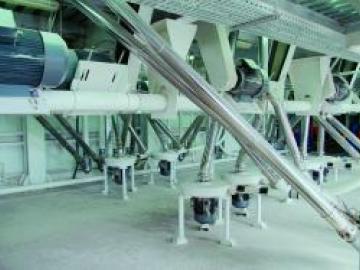Vacuum Pumps for Pneumatic Suction Conveying
Nowadays, pneumatic suction conveying is an important technology for feeding bulk goods gently through piping systems to the various process steps. In the area of food processing, the pharmaceutical and chemical industry and for material feed in plastics processing, suction conveying is indispensable when powder or granular materials have to be transported. The proper choice of the vacuum generator essentially determines the operating costs of a pneumatic conveying system.



